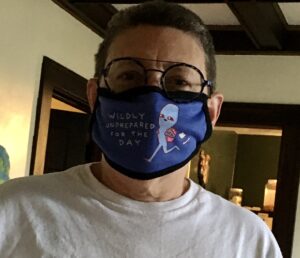I recently had the opportunity to talk with Suzi Carr on her Curves Welcome podcast about problem-solving, and you can listen to the podcast here
I loved having the opportunity to speak with her and discuss my problem-solving approach, which the past twelve months tested to the limit.
Last March, my kids came home from school on a Friday and never went back. The problems presented ranged from technological issues raised by remote schooling to logistical issues like sharing the dining room table and mental health issues as we adjusted to their new routine, death with grief, fear, and uncertainty as the pandemic progressed. No one in my house is neurotypical and that added layers to our difficulties. It is super hard as a parent to handle/manage/cope with your own ADHD and PTSD and assist your neurodivergent kids with their own challenges.
I had spent much time in January and February 2020 planning my year, pitching a podcast, and outlining new writing projects. By April it became clear that I needed to revamp my plans and figure out a way forward.
In the podcast, I discuss using the following approach to solving problems. It’s a method that I’ve used for years.
- Get clear about what the problem is, write it down. Is it a question of money, time, space, personal issue, or a combination? Is it in your locus of control? If it isn’t within your ability to address the difficulty, your focus shifts from solving the problem to coping with the situation. Is it a problem or just an inconvenience? Is it time-limited or ongoing?
- Make three lists concerning your problem: What do you have? What do you need? Options for acquiring what you need.
- Brainstorm solutions to the problem; think of as many possible solutions as you can. Don’t limit yourself in thinking of solutions, be bold. Organize your list; some solutions will take more to put into place than others. For each answer, list the steps you will need to take to solve the problems using that solution.
- Do it. Put in place one of your solutions, test it out. If it doesn’t work, try another; keep trying until you are satisfied with the result.
This system may seem like a lot of work, and not every problem requires this amount of time to sort out. But for issues that derail your progress/work/happiness, it is worth the time put into the thinking/planning to arrive at a solution that works.
Until next time, be safe and well.
Brenda Murphy writes short fiction and novels. Her novel Double Six won the 2020 GCLS Goldie for Erotica. The first novel in her University Square Series is a 2021 Goldie Finalist. She loves tattoos and sideshows and yes, those are her monkeys. When she is not loitering on her front porch and writing, she wrangles two kids, one dog, and an unrepentant parrot. She blogs about life as a writer with ADHD and publishes photographs on her blog Writing While Distracted. Sign Up for her email list and receive a free short stories at www.brendalmurphy.com
Books available at



